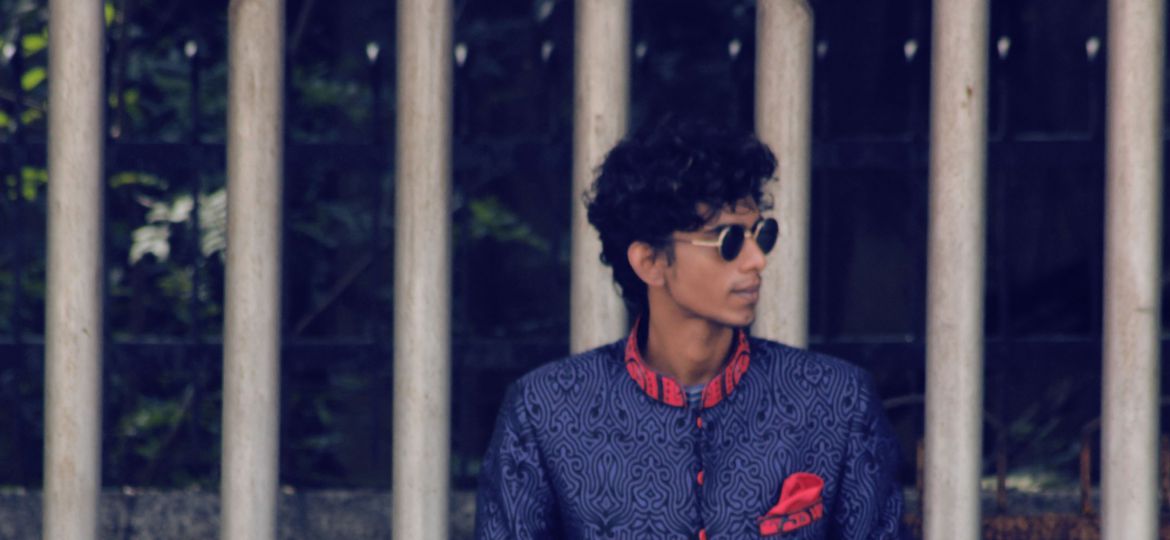
Purushu Arie is an Indian fashion designer and blogger, who has recently launched the country’s first gender-neutral clothing brand. His eponymous blog, from where he takes his design orders, started in 2009 while he was studying at NIFT, Delhi, is one of the most popular men’s fashion blogs around, and receives more than 30,000 hits per month. One of the official fashion bloggers of the Fashion Design Council of India for their shows (including the India Fashion Week), Purushu has also been a fashion columnist for the daily newspaper The Hindu from 2014-15.
He denounces the term androgyny (the gender expression that combines masculine and feminine characteristics), and prefers to call his style ‘gender-neutral’ instead.
In this interview, Purushu talks about his new fashion line, about the connection between attire and gender roles, the social statement cisgender people make when they wear gender-neutral clothing, and how the rise in gender-neutral clothing will affect the way we think about masculinity.
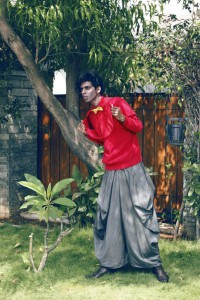
SHAIFALI AGRAWAL: To what extent would you say one’s sexuality affects one’s choice of attire?
PURUSHU ARIE: As a society, I think we are doing more harm than good by associating clothing with sexuality. Tagging any particular attire or style with one’s sexuality only leads to stereotyping, and we must focus more on liberating ourselves from any kind of stereotypes. It’s probably due to the prevailing stereotypes that many heterosexual men in particular are often afraid to experiment with their clothing.
Existing gender norms of masculinity, especially, are very sensitive to fashion. It takes something as simple as the colour pink to dismantle the entire notion of masculinity. That’s too touchy and insecure for all that toughness that masculinity emphasises on, isn’t it? In contrast, that kind of deep insecurity, on the basis of gender or sexual identity doesn’t concern women. A large number of women, heterosexual or homosexual, comfortably switch from T-shirts-and-denims to a little black dress with no qualms.
Coming to your question, yes, especially among men: Homosexual men are more readily willing to experiment with sartorial choices than heterosexual men. Most masculinity norms of today find roots in Roman culture when society became increasingly patriarchal. Norms of gender-specific clothing and appearances were strengthened over the centuries.
However, the good news is that a large number of heterosexual men are boldly breaking free from prevailing stereotypes. The modern ‘metrosexual’ man dismantled the traditional masculine norms by not shying away from what’s perceived as feminine – be it fashion choices like skinny jeans, grooming habits like waxing, or taking a significant role in household activities and parenting. Abandonment of ideas of what’s masculine and feminine among metrosexual men has played a crucial role in opposing hegemonic masculinity. It’s a remarkable breakthrough when sportsmen like Cristiano Ronaldo (who are often seen as the epitome of masculinity) carry purses, shape their brows and wax their hair. Heterosexual men are now more ready to experiment with not only clothing but grooming and many other lifestyle aspects as well.
SA: What inspired you to start the country’s first gender-neutral clothing line? What vision and aim do you have with it?
PA: When I was studying at NIFT Delhi in 2009-2013, I would wear my girlfriend’s pegged trousers and jackets to college. That is when I realized something very important — men and women of today are living parallel lives and their clothing needs to perform the same function in most cases. This realisation made me rebel against the existing gender-specific clothing norms. I made my Women’s Wear graduate collection keeping in mind that I’d want to wear the clothes too.
My clothes don’t aim to make men feminine or women masculine but instead aim to remove the very notion of ‘masculine’ and ‘feminine’. My creations aim to dismantle the idea that a certain appearance is ‘masculine’ or ‘feminine’. On a more significant note, gender-neutral clothing that looks beyond the gender binary is more inclusive of different gender identities and expressions.
SA: Has India’s gender revolution in fashion arrived? How would, say, the February ’16 cover of (fashion magazine) L’Officiel with Ranveer Singh wearing a silk georgette pussy bow blouse and nose ring influence the conversation?
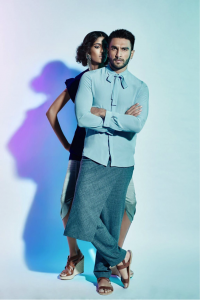
PA: The Indian film industry is the leading propagator of hegemonic masculinity in India. Hegemonic masculinity is the idea that men are socially superior and the role of women is to provide the man with sexual validation. Hegemonic masculinity is propagated through our macho heroes who often ‘eve-tease’ the submissive heroines, and eventually win their hearts.
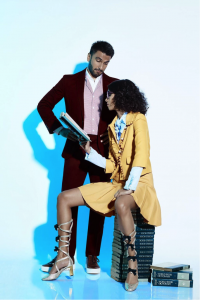
For an industry that celebrates hegemonic masculinity in the form of its heroes, L’Officiel Feb ’16 cover starring Ranveer Singh transcends fashion, and makes a significant socio-cultural statement. It is superbly brave of Ranveer Singh to challenge the gender-specific clothing status quo.
SA: Is gender-neutral fashion preferred by trans people (those who transcend the gender they were assigned at birth), or do cisgender people also seek it out?
PA: The social statement that gender-neutral clothing makes about cisgender people is very significant. Clothing can significantly impact our visual senses and raise bigger questions. People need to think: Why? Why gender-neutral clothing? Why is it okay for a short woman to wear high heels but socially inappropriate for a short man to wear the same? Why are men afraid to wear nail-paint when they are okay with colouring their hair? There will be no answers without questions. Gender-neutral fashion makes people ask the question ‘Why?’
SA: You’ve written earlier in your blog that “gender-neutral clothing is for youth who live by the philosophy of hedonism”.
PA: I think I have been misunderstood there. Gender neutral clothing may not necessarily be for youth who live by the philosophy of hedonism. It’s irrelevant. I think gender-neutral clothing is for individualistic and confident people whose gender identity/expression isn’t destroyed by something as simple as a piece of clothing.
Gender-neutral clothing and age can have an interesting relationship. We start throwing gender norms into the equation right from birth when male babies are given blue blankets and female babies are given pink ones. We’re teaching them gender norms when we ask our girls to play with Barbie dolls and boys to play with guns. Even the most liberal parents are horrified to see their son wanting to wear nail-paint.
This attitude needs to change. The ideas bestowed in the first 7-8 years of the child’s development have the strongest foundation. If we don’t tell our young boys to not cry and to ‘be a man’, if we don’t teach them gendered socialisation, we’ll see a day when gendered clothing is just an abnormal product of sexism, and genderless clothing is the norm.
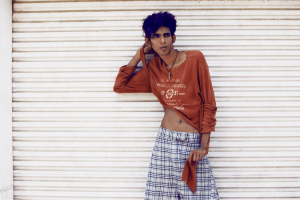
SA: Masculine clothing has been worn by women for ages. But it’s the femininity in menswear that seems to be the rage these days.
PA: In contrary to popular belief, men have worn what’s perceived as ‘feminine’ clothing for the most part of history, while women have been wearing the so-called ‘masculine’ clothing only since the early 1900s. For example, men have been wearing long decorative robes in rich velvets and silk for several centuries now.
Fashion is nothing but a reflection of our society. In the West, women abandoned cumbersome gowns and dresses to adopt suits and trousers when they started taking up outdoor roles. It comes down to functionality. Fashion is clearly influenced by lifestyle and socio-cultural aspects, and not vice-versa. With changing mindsets, we have changing clothing and modesty norms.
SA: Fashion is possibly the only industry where queerness is openly accepted unanimously across the world. Some of the most iconic designers such as Tom Ford, Calvin Klein and Marc Jacobs are proudly queer. What is it about attire and clothing that makes this space and industry more accepting than any other?
PA: Not only fashion, even the entertainment industry has historically accepted queerness. But if the Apple CEO is openly gay, then that statement holds lesser relevance in the modern world. It’s not about clothing, it’s the people who form the industry. People in fashion and entertainment industries have had relatively liberal views, and are a lot more accepting of individualistic traits. In fashion, you are not targeted for being different from what’s perceived as the popular norm.
Cover image from purushu.com